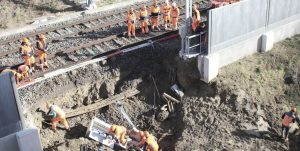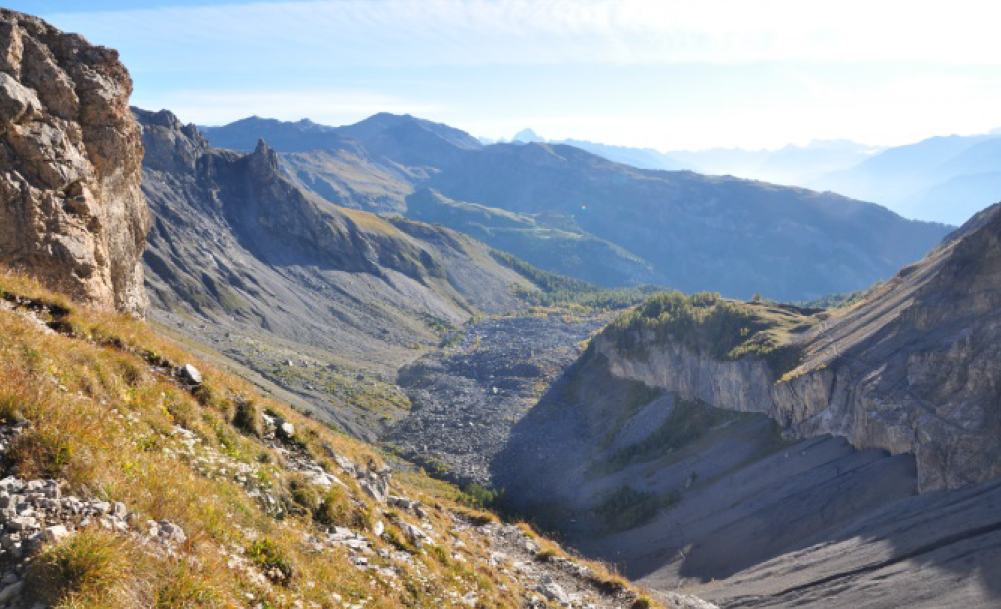Karen Sudmeier-Rieux
Director: Prof. Michel Jaboyedoff
Jury: Dr. Ronald Jaubert, Dr. JC Gaillard, Dr. Markus Zimmermann, Dr. Knut Falk
In Nepal, landslides are one of the major natural hazards after epidemics, killing over 100 persons per year. However, this figure is an underreported reflection of the actual impact that landslides have on livelihoods and food security in rural Nepal. With predictions of more intense rainfall patterns, landslide occurrence in the Himalayas is likely to increase and continue to be one of the major impediments to development. Due to the remoteness of many localities and lack of resources, responsibilities for disaster preparedness and response in mountain areas usually lie with the communities themselves. Everyday life is full of risk in mountains of Nepal. This is why mountain populations, as well as other populations living in harsh conditions have developed a number of coping strategies for dealing with adverse situations. Perhaps due to the dispersed and remote nature of landslides in Nepal, there have been few studies on vulnerability, coping- and mitigation strategies of landslide affected populations. There are also few recommendations available to guide authorities and populations how to reduce losses due to landslides in Nepal, and even less so, how to operationalize resilience and vulnerability.
Many policy makers, international donors, NGOs and national authorities are currently asking what investments are needed to increase the so-called ‘resilience’ of mountain populations to deal with climate risks. However, mountain populations are already quite resilient to seasonal fluctuations, temperature variations, rainfall patterns and market prices. In spite of their resilience, they continue to live in places at risk due to high vulnerability caused by structural inequalities: access to land, resources, markets, education. This interdisciplinary thesis examines the concept of resilience by questioning its usefulness and validity as the current goal of international development and disaster risk reduction policies, its conceptual limitations and its possible scope of action. The goal of this study is two-fold: to better define and distinguish factors and relationships between resilience, vulnerability, capacities and risk; and to test and improve a participatory methodology for evaluating landslide risk that can serve as a guidance tool for improving community-based disaster risk reduction. The objective is to develop a simple methodology that can be used by NGOs, local authorities and communities to reduce losses from landslides.
Through its six case studies in Central-Eastern Nepal, this study explores the relation between resilience, vulnerability and landslide risk based on interdisciplinary methods, including geological assessments of landslides, semi-structured interviews, focus groups and participatory risk mapping. For comparison, the study sites were chosen in Tehrathum, Sunsari and Dolakha Districts of Central/Eastern Nepal, to reflect a variety of landslide types, from chronic to acute, and a variety of communities, from very marginalized to very high status. The study uses the Sustainable Livelihoods Approach as its conceptual basis, which is based on the notion that access and rights to resources (natural, human/institutional, economic, environmental, physical) are the basis for coping with adversity, such as landslides. The study is also intended as a contribution to the growing literature and practices on Community Based Disaster Risk Reduction specifically adapted to landslide- prone areas.
In addition to the six case studies, results include an indicator based methodology for assessing and measuring vulnerability and resilience, a composite risk assessment methodology, a typology of coping strategies and risk perceptions and a thorough analysis of the relation between risk, vulnerability and resilience. The methodology for assessing vulnerability, resilience and risk is relatively cost-effective and replicable in a low-data environment. Perhaps the major finding is that resilience is a process that defines a community’s (or system’s) capacity to rebound following adversity but it does not necessarily reduce vulnerability or risk of this community), which require addressing more structural issues related to poverty. Therefore, conclusions include a critical view of resilience as a main goal of international development and disaster risk reduction policies. It is a useful concept in the context of recovery after a disaster but it needs to be addressed in parallel with vulnerability and risk.
This research was funded by an interdisciplinary grant (#26083591) from the Swiss National Science Foundation for the period 2009-2011 and a seed grant from the Faculty of Geosciences and Environment at the University of Lausanne in 2008.


